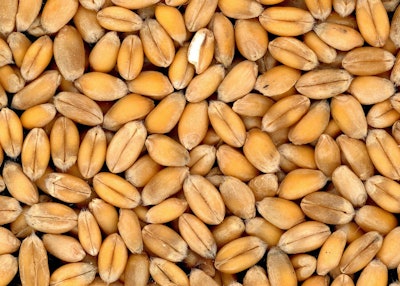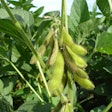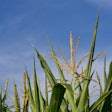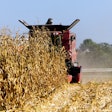
The latest U.S. Department of Agriculture export sales report for the week ending May 22, 2025, reveals varied performance across agricultural commodities, with notable shifts in wheat, corn, and soybean products.
Wheat exports faced significant challenges, with net sales reductions of 128,800 metric tons (MT) for the 2024/2025 marketing year. This downturn was primarily due to substantial reductions for unknown destinations, the Philippines, and South Korea. However, the outlook for the 2025/2026 marketing year appears more promising, with net sales of 711,400 MT, mainly to unknown destinations, Mexico, and South Korea.
In contrast, corn exports showed resilience despite a slight decline. Net sales of 916,700 MT for 2024/2025 were down 23% from the previous week but remained strong, with Japan, Mexico, and Colombia as the primary buyers. Exports of 1,598,300 MT held steady, matching the prior 4-week average.
Soybean exports experienced a significant downturn, with net sales of 146,000 MT for 2024/2025 dropping 53% from the previous week. Mexico, Indonesia, and Japan were the top destinations. Exports hit a marketing-year low at 209,300 MT, down 45% from the prior 4-week average.
Soybean meal emerged as a bright spot in the report. Net sales of 424,600 MT for 2024/2025 increased 18% from the previous week, with the Philippines, Japan, and Mexico leading purchases. Exports rose 8% to 269,800 MT, primarily destined for the Philippines, Colombia, and Mexico.
Cotton exports showed mixed results. Upland cotton net sales of 118,700 running bales (RB) for 2024/2025 were down 16% weekly but up 8% from the 4-week average. Vietnam, Bangladesh, and Turkey were the main buyers. Pima cotton saw a marketing-year low with net sales reductions of 1,700 RB.
The report also highlighted notable activity in beef and pork exports. Beef net sales of 14,700 MT for 2025 increased 20% from the previous week, with Japan, South Korea, and Mexico as top destinations. Pork net sales reached 30,500 MT, down 19% weekly but up 1% from the 4-week average, with Mexico, South Korea, and Japan leading purchases.
These fluctuations in agricultural exports reflect the dynamic nature of global markets and underscore the importance of monitoring trade patterns for the U.S. agricultural sector.


















